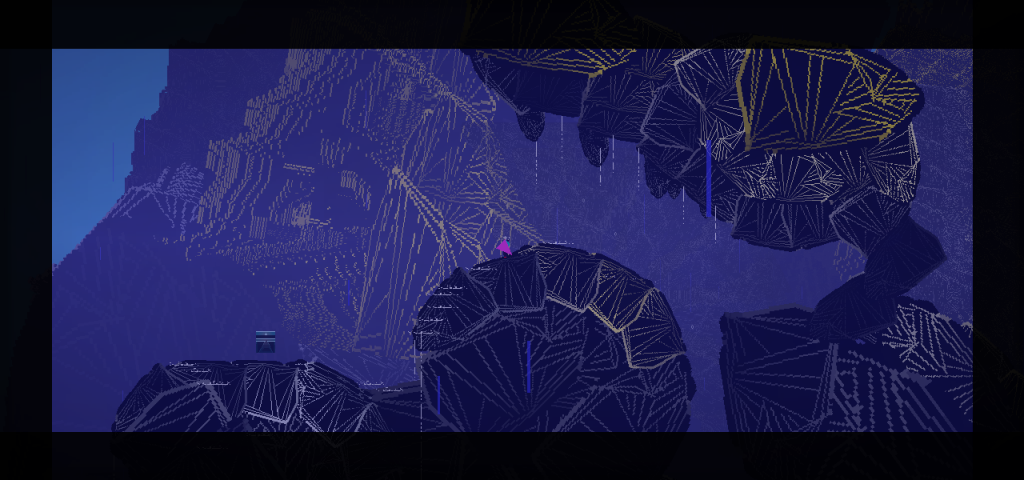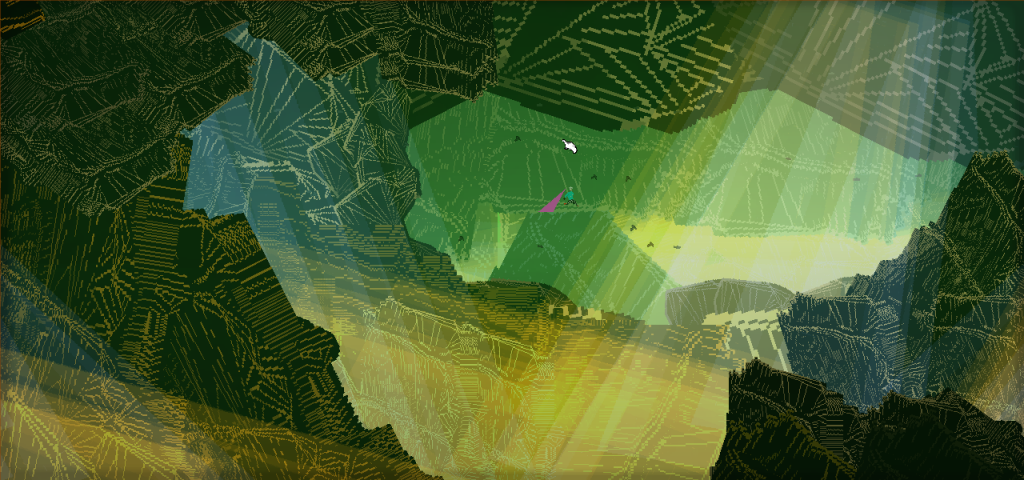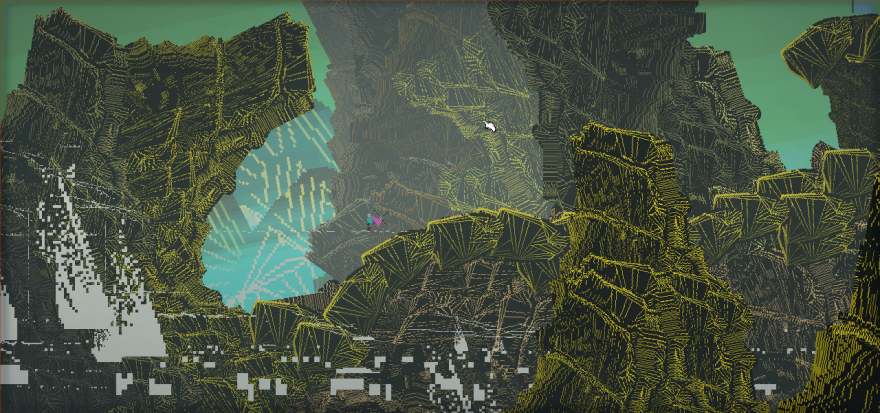When Barch released DEIOS back in 2014 there was something immediately off about it. It proposed that you were a man. It proposed that this man assembled guns from hundreds of possible parts. It proposed that with one of these guns this man would shoot gods until they were dead. But all the guns were fucked. And killing even one of the gods proved to be near-impossible. DEIOS seemed too hard or too broken to feasibly spend much time with it. Yet this seems to have been the game and perhaps the experience that Barch wanted to create.
What to expect from a sequel, then? Barch has now announced Deidia, which he’s deemed “Deios II,” and yeah, it certainly looks the part. But the idea behind Deidia seems stronger—it knows where it’s coming from this time around. Barch still uses terms like “cyberpunk” and “glitchventure” to describe Deidia, as he did with DEIOS, but this time he’s not only pulling ideas from tech culture and sci-fi, but plotting them on a timeline.
The description claims that Deidia was created in 1994 as “part of a series of works to be ported amongst the thousand cassette independent Operating Systems.” The back story then goes that Deidia was quickly abandoned, forgotten, and left in a broken state. Only now, many years later, have “various post-amiga demogroups” found it and restored the uncorrupted files so that they work on modern systems. That’s what we’ll purportedly get to play when Deidia comes out. It’s still very much of the alternate world that Barch has imagined and presumably enters to channel his creativity, but Deidia has a solid concept, as a “celebration of Lost, abandoned games – and their unique enjoyment of their unique qualitys.”
Not only that, but where DEIOS also had some technical problems—I recall having issues trying to get it to launch—Deidia has had that addressed from its very inception. DEIOS was Barch flaunting his art skills, creating a beautiful psychotropic glitchscape of subterranean spaces and frothy lakeside archipelagos, and then inserting a game into that. The result was a clunky piece of software, which admittedly did fit in with the aesthetic, but ultimately proved too close to actual abandonware. And so, for Deidia, Barch has created the DeityRPG engine, which allows the artwork to be more of an automated process while he focuses on building levels to explore—”scenes can be developed in real time in order to build expansive areas quickly in what would of taken weeks is done in seconds,” Barch writes about his engine.
What this should mean for Deidia is it’ll provide a lot of lush, 2D pixel-art vistas to smoothly scroll across, running and jumping in a mad frolic. That much is evident from its trailer. In other words, it’ll play from start to finish without too much of a hiccup, fingers crossed. Aside from that, it seems Barch is trying to encourage people who do play it to leave “memorys” on DeityNet—his messaging program and Alt.BBS community. And it’s with this that Barch’s entire vision comes into focus. He’s not making a videogame meant to be played as a singular experience, he’s looking to create a whole abandonware realm, where broken and forgotten software is discussed, appreciated, perhaps even worshiped—where the pinnacle of videogames is their ability not to adhere to realism’s principles, but to enrapture us in an alternate dimension. In this case, it’s one where the “broken cable boys & girls of the internet streams” are brought together around an “experimentation of micro-genre games.”
You can find out more about about Deidia on Steam Greenlight.


